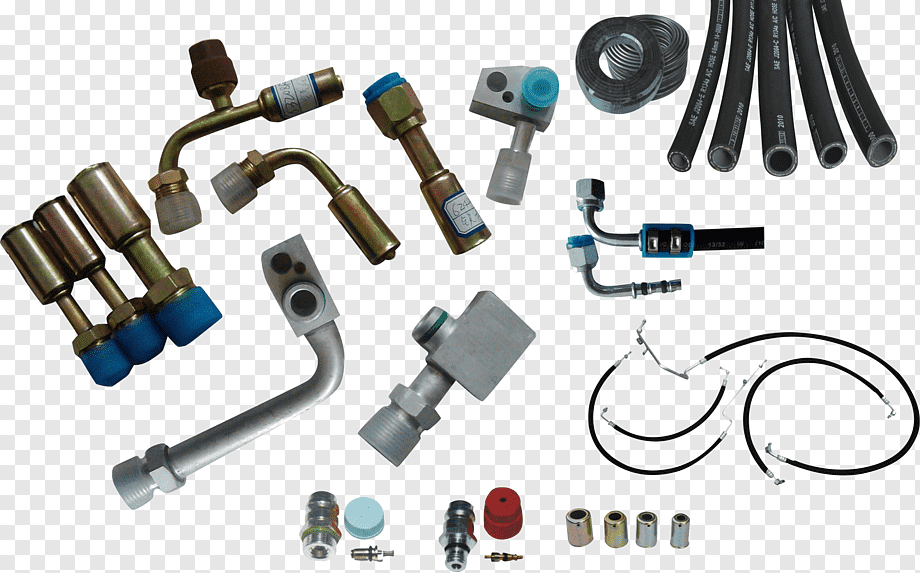Introduction
A vehicle’s air conditioning (AC) system relies on a network of hoses, pipes, and fittings to circulate refrigerant and maintain optimal cooling. Automotive air conditioning fittings play a vital role in ensuring leak-proof connections, refrigerant flow efficiency, and system durability.
In this guide, we will explore the types of automotive AC fittings, their functions, how to install them properly, and why high-quality fittings are essential for vehicle cooling performance.
1. What Are Automotive Air Conditioning Fittings?
Automotive AC fittings are connectors and adapters used to join refrigerant hoses, expansion valves, compressors, and condensers within a vehicle’s air conditioning system. These fittings ensure secure and efficient refrigerant flow without leakage or pressure loss.
They are essential for:
✅ Connecting refrigerant lines securely
✅ Preventing leaks and pressure drops
✅ Ensuring optimal cooling efficiency
✅ Facilitating easy maintenance and repairs
2. Types of Automotive Air Conditioning Fittings
A. Standard AC Hose Fittings
✔ Male & Female O-Ring Fittings – Used for high-pressure refrigerant hoses.
✔ Flare Fittings (SAE 45° & 37° JIC) – Creates a tight, leak-proof seal for refrigerant lines.
✔ Barb Fittings – Securely connects rubber hoses to metal pipes.
B. Quick-Connect AC Fittings
✔ Spring Lock Couplers – Commonly used in Ford, GM, and Chrysler vehicles.
✔ Push-Lock Fittings – Allows easy installation without special tools.
✔ Snap Fittings – Used for quick assembly and disassembly of AC lines.
C. Threaded & Compression Fittings
✔ AN (Army-Navy) Thread Fittings – High-performance fittings for racing and off-road vehicles.
✔ Compression Fittings – Uses a compression nut to secure refrigerant pipes.
✔ Swivel Fittings – Allows flexible movement of refrigerant hoses.
D. Specialty AC Fittings
✔ Bulkhead Fittings – Pass refrigerant lines through firewall panels.
✔ Manifold Fittings – Used in multi-line connections within AC systems.
✔ Tee & Elbow Fittings – Redirect refrigerant flow around tight spaces.
3. Importance of High-Quality Automotive AC Fittings
Using the right automotive air conditioning fittings ensures:
✅ Optimal Cooling Efficiency – Maintains consistent refrigerant flow.
✅ Leak Prevention – Reduces refrigerant loss and system inefficiency.
✅ Long-Term Durability – Prevents corrosion and wear & tear.
✅ Better Fuel Economy – An efficient AC system reduces engine strain.
✅ Easier Maintenance – Simplifies repairs and refrigerant refilling.
4. Best Practices for Installing Automotive AC Fittings
✔ Choose the Right Fittings for Your Vehicle – Match fittings with hose and system specifications.
✔ Use Quality Seals & O-Rings – Prevent leaks by using high-quality rubber seals.
✔ Ensure Proper Tightening – Over-tightening can damage fittings and cause leaks.
✔ Perform a Pressure Test – Always check for refrigerant leaks before running the AC system.
✔ Regular Maintenance – Inspect fittings and hoses periodically to prevent failures.
5. Conclusion
Automotive air conditioning fittings are crucial components that ensure smooth refrigerant flow, system efficiency, and long-lasting vehicle cooling performance. Choosing high-quality fittings and proper installation techniques helps prevent leaks, improves AC efficiency, and extends the life of your vehicle’s air conditioning system.
If you’re upgrading or repairing your vehicle’s AC system, consult a professional auto technician for the best results.

